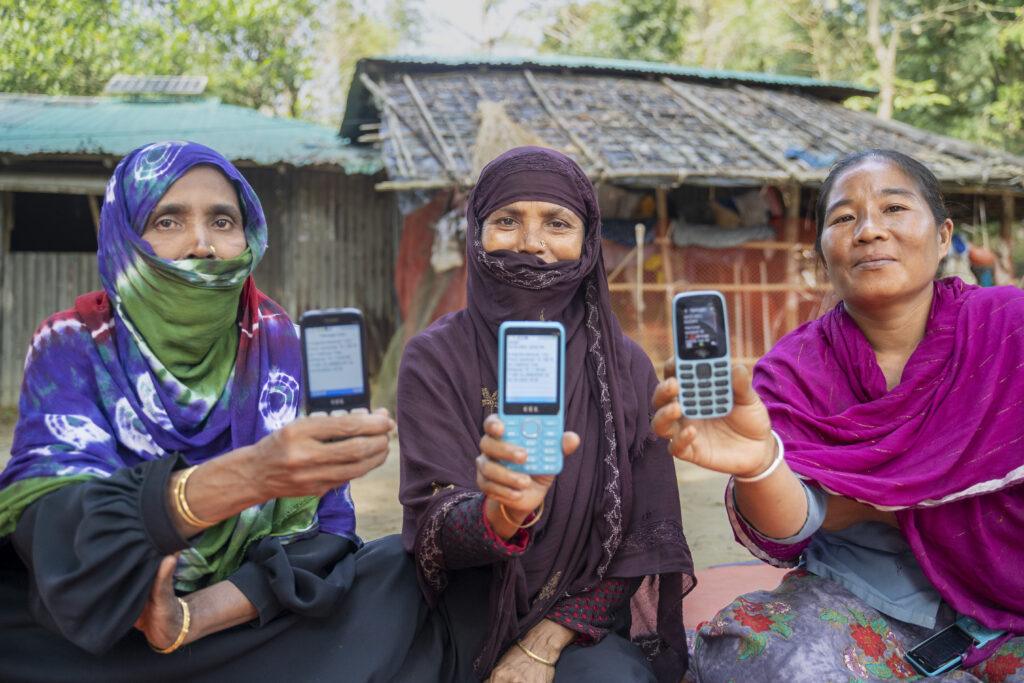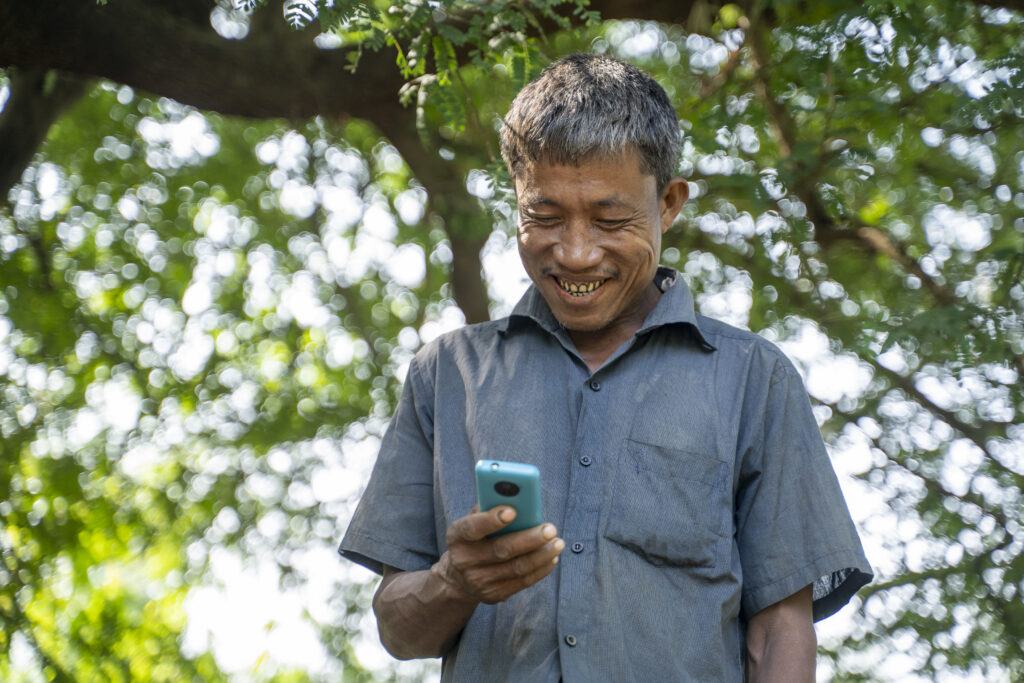- GiveDirectly partnered with researchers and the Government of Bangladesh to test whether phone data and machine learning could replace traditional poverty targeting methods.
- The pilot showed that mobile-based targeting outperformed community selection and matched survey-based methods, at lower cost and greater speed.
- With better rules and partnerships, this approach could scale rapidly to reach people in poverty or crisis before traditional programs can.

Most aid programs still use outdated lists that miss people in crisis
About one in five Bangaldeshis live below the national poverty line. The government runs over 100 social protection programs reaching nearly 30m people. But many rely on static registries that fail to capture real-time need, like when a cyclone hits, a breadwinner loses work, or a family is displaced. As a result, people who should qualify for support are often missed.
GiveDirectly and a team of researchers from from University of California, Berkeley set out to test a different approach: could anonymized mobile phone data, analyzed by machine learning, do a better job identifying low-income households? We call this “MobileAid.”
We tested whether phone behavior could predict poverty better than slow, expensive surveys
With funding from USAID and Google.org, and support from the Government of Bangladesh’s Aspire to Innovate (a2i) program under UNDP, we piloted MobileAid in Cox’s Bazar. This district has experienced repeated shocks in recent years, from hosting Rohingya refugees to COVID-related income loss.
The goal: use patterns in phone use to remotely identify families likely living in poverty — faster, cheaper, and at national scale.
Phone metadata predicted economic vulnerability
We first collected data the old-fashioned way: a census of 106,200 households across 200 villages, a representative survey of 5,000 households, and community-based targeting exercises in the same areas. These became our benchmarks.
Then, for households who consented, we obtained anonymized call detail records (CDRs) from all four of Bangladesh’s mobile operators. These included:
- 📞 Call frequency and duration
- 💬 SMS use
- 💳 Recharge behavior
- 👥 Diversity of contacts
- 📍 Movement patterns based on cell tower location
We trained a machine learning model to predict poverty using these indicators, validated its predictions against survey data, and used it to identify households likely to be in extreme poverty.
We then paid selected families via mobile money
Selected households were contacted through Bangladesh’s national helpline (333), where trained agents verified their identities, collected additional socioeconomic information, and helped them set up mobile money accounts with bKash if needed.
Each household received BDT 15,000 ($136), paid in two equal installments between November 2023 and March 2024. A staffed call center remained active throughout the program to answer questions and resolve issues.

“No one came to our village with forms or lists. We just provided some basic information over the phone. The money came directly to our mobile phone. This process felt fair and simple.” — Okka Lal Chakma
This MobileAid approach outperformed community targeting and rivaled traditional surveys on accuracy
The study compared MobileAid to two traditional targeting approaches:
- Community-based targeting, where local leaders select recipients
- MobileAid was more accurate than community selection
- Proxy-means testing, a survey-based method that estimates income from observable household traits
- Proxy-means testing was more accurate than MobileAid, but much slower and more expensive
For programs screening thousands on tight budgets, phone-based targeting worked best
Simulations across Bangladesh and Togo showed that:
- When budgets are tight and the number of households to screen is high, phone-based targeting delivers the greatest welfare impact per dollar
- When budgets are large, proxy-means testing pulls ahead
- Community-based targeting was never the most cost-effective or accurate option
Fully remote targeting cut costs, but surfaced new barriers
This was one of GiveDirectly’s first programs to go fully remote — from eligibility to enrollment to payment. It worked. But four big challenges stood out:
- 🏛️ Regulatory approvals need to be faster and repeatable. This pilot required one-time authorization. Scaling will require permanent, predictable frameworks.
- 📡 Telecom cooperation needs incentives, not just goodwill. Telcos participated pro bono, but securing timely data took longer than expected. Future efforts need formal agreements and shared value.
- 🗣️ Trust still travels fastest through people. To test a purely remote model, we avoided in-person outreach. But early payments and community word-of-mouth proved critical. Future models should blend tech with in-person.
- 🤳🏾The most vulnerable people are the least likely to have a phone. We can only reach people who already use a mobile phone. While 98% of Bangladeshi families have at least one, ownership is lowest among women, people with disabilities, and the very poorest. This risks excluding those most in need – another reason to ensure a blended approach.
To scale MobileAid, we need better rules, incentives, and people
The pilot shows what’s possible. But scaling it across Bangladesh or to other disaster-prone countries means:
- 🏛️🔁 Creating repeatable approval pathways for digital targeting
- 📡🤝 Institutionalizing telecom data-sharing protocols
- 🗣️🧑🏽🤝🧑🏿 Blending AI with community outreach to build trust and reach those excluded
MobileAid is ready to scale, especially in response to disasters
In climate crises, speed matters, and phone-based targeting can move faster than surveys or registries.
- 📉 Drops in mobile money usage or recharges can signal economic distress
- 📍 Location data from cell towers can confirm who’s still in a flood zone, before outside teams arrive
- 📲 Behavioral changes — fewer calls, less movement — can flag households in trouble
Used well, MobileAid offers a fast-track list: likely-eligible households for early support. Field teams can then follow up to verify or expand the pool.
This isn’t a future concept. The tools already work. With the right infrastructure, MobileAid could help governments and donors deliver social protection that’s faster, fairer, and better matched to people’s actual lives.